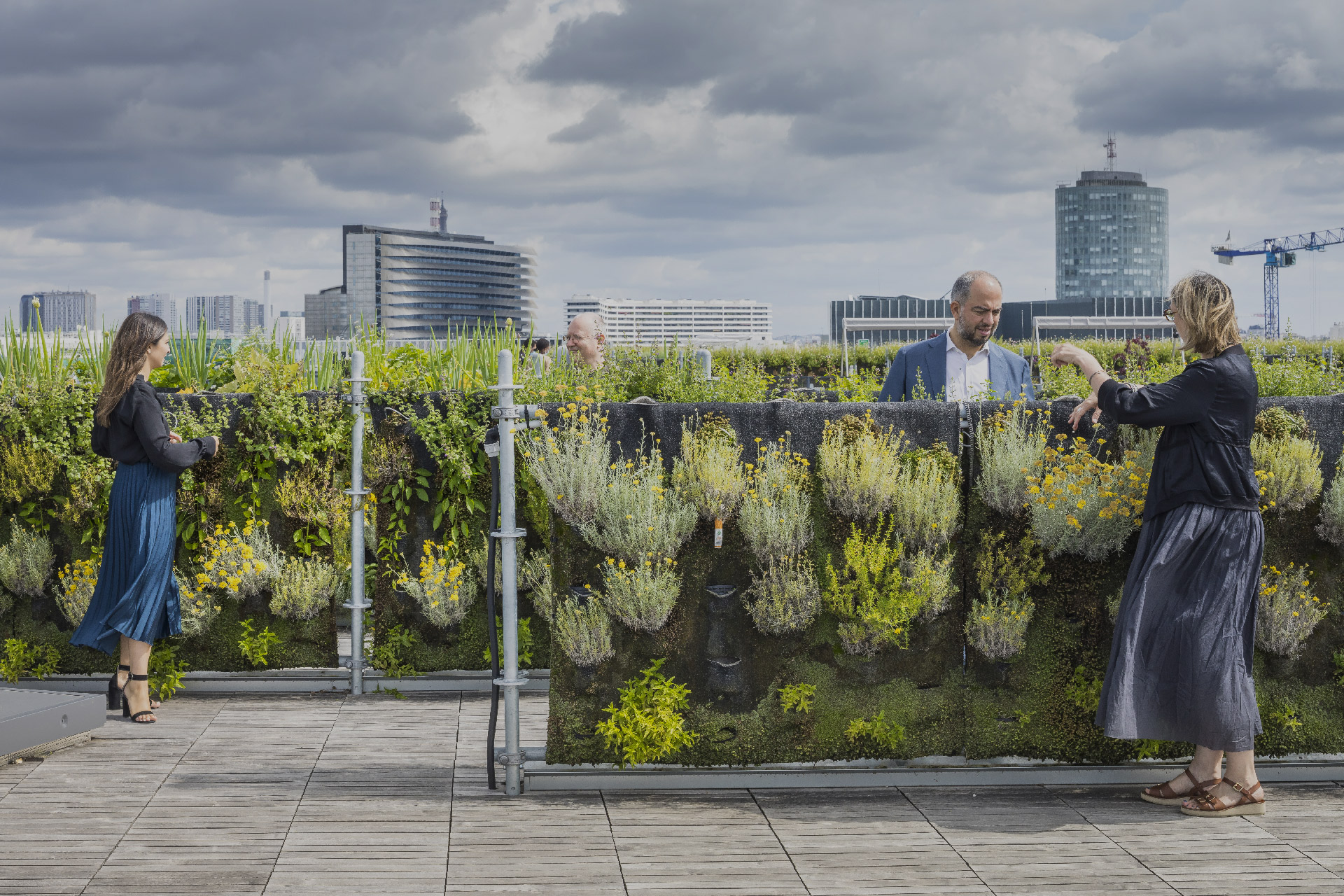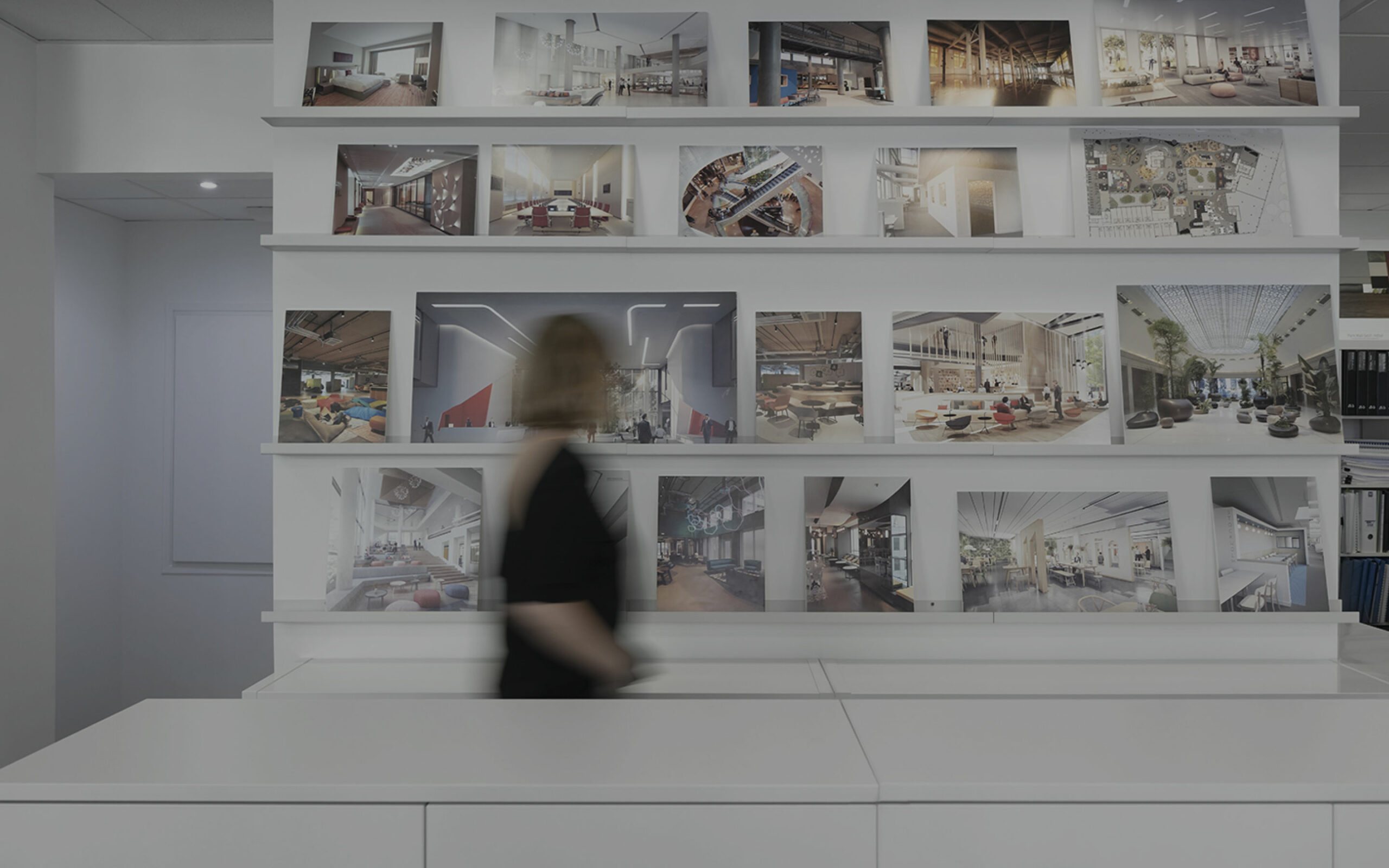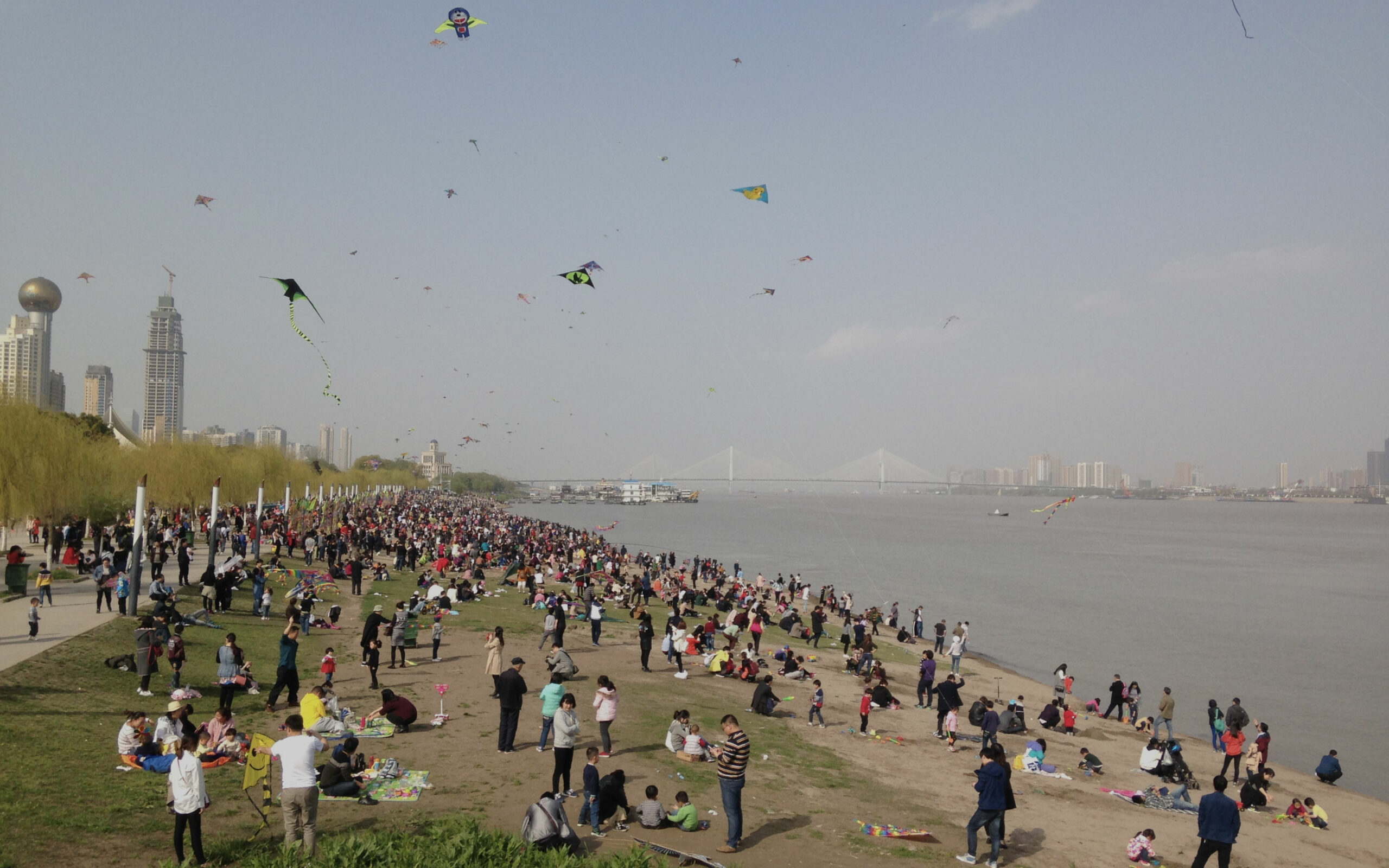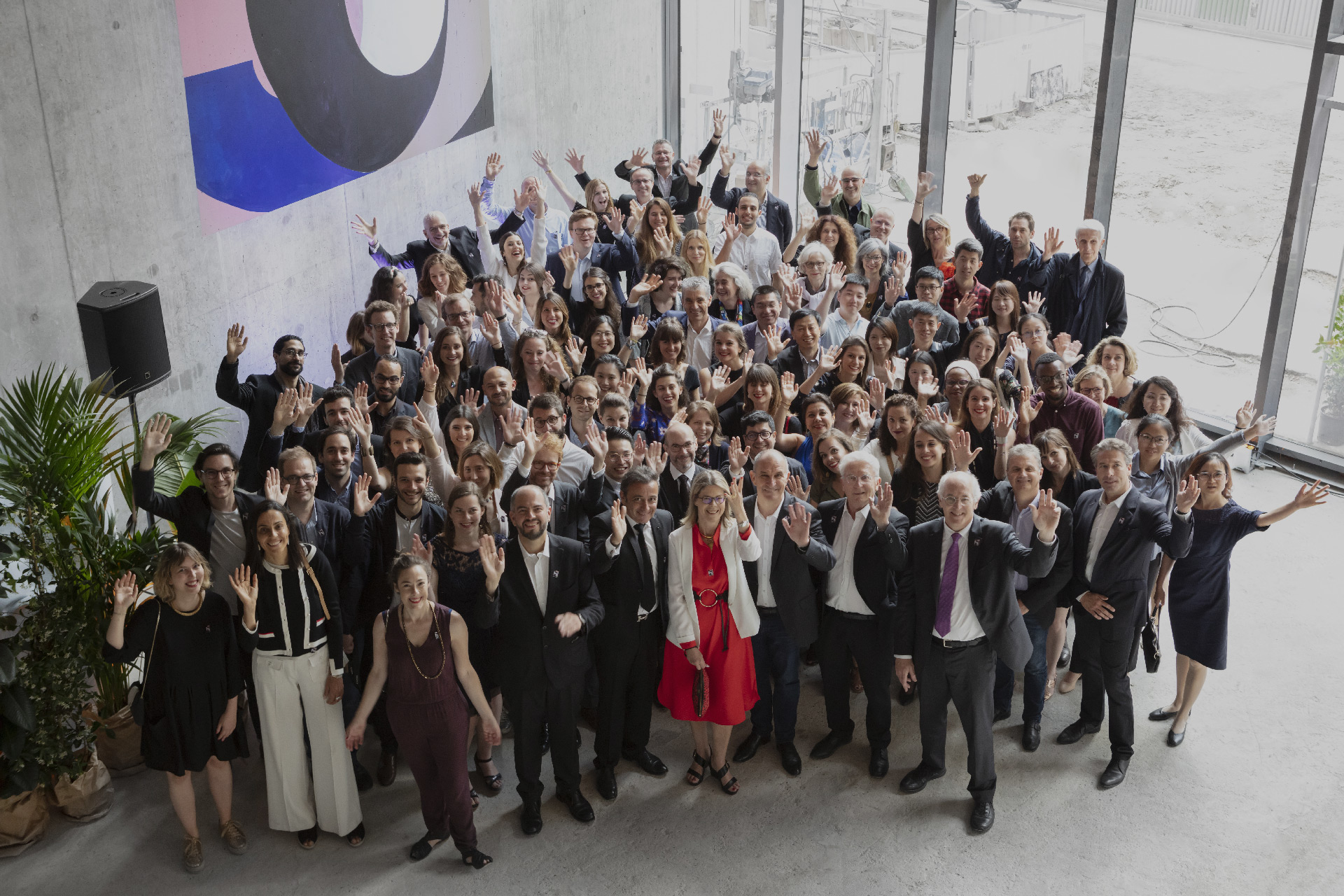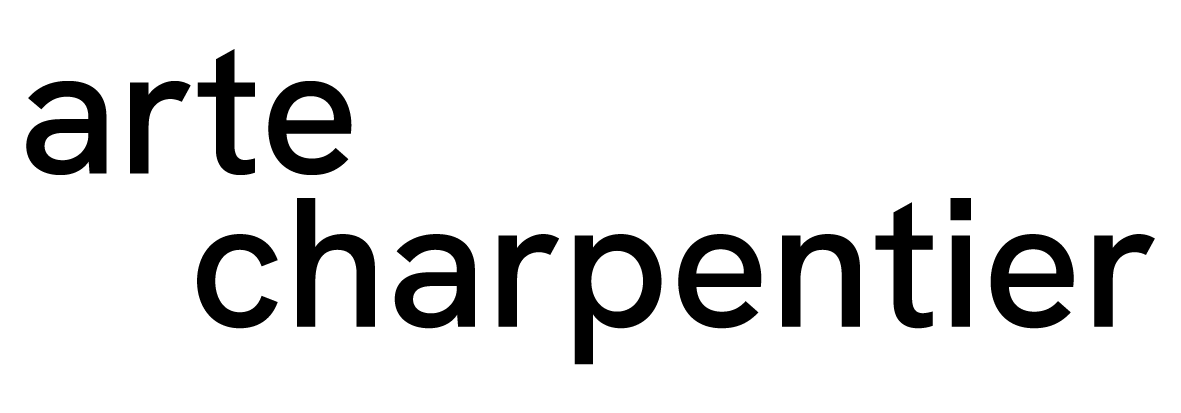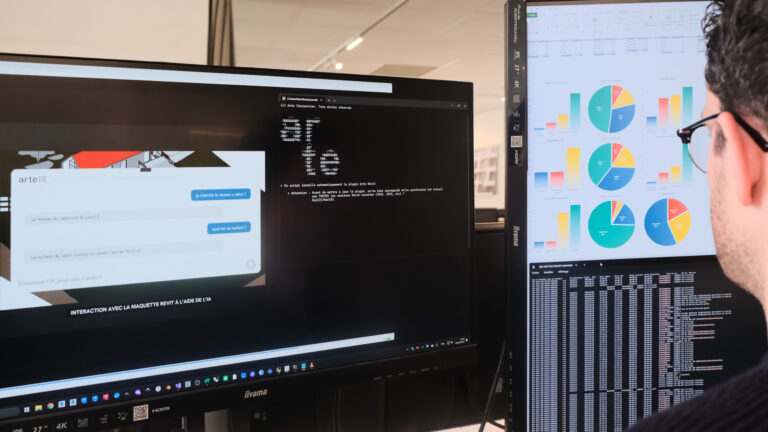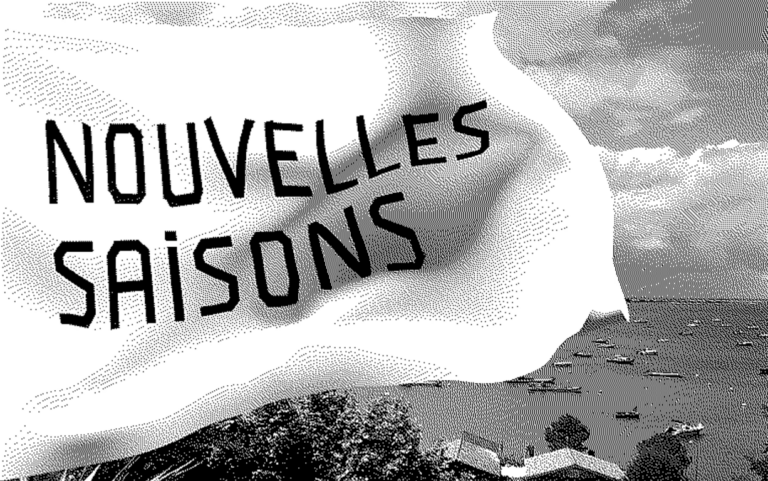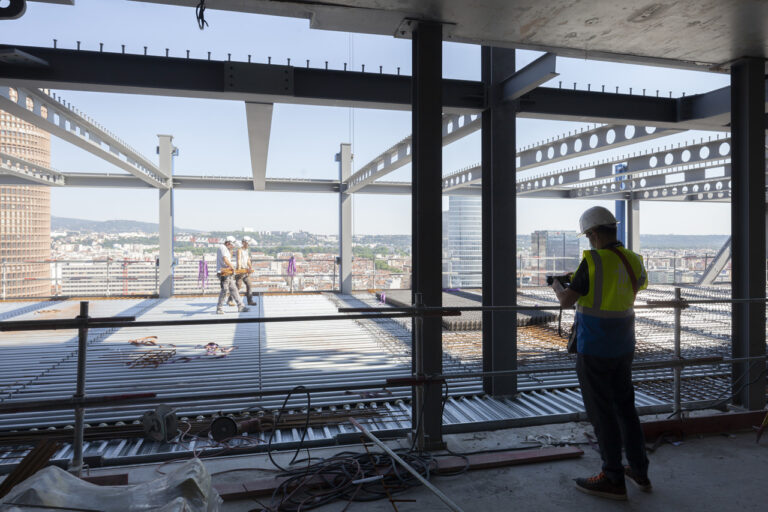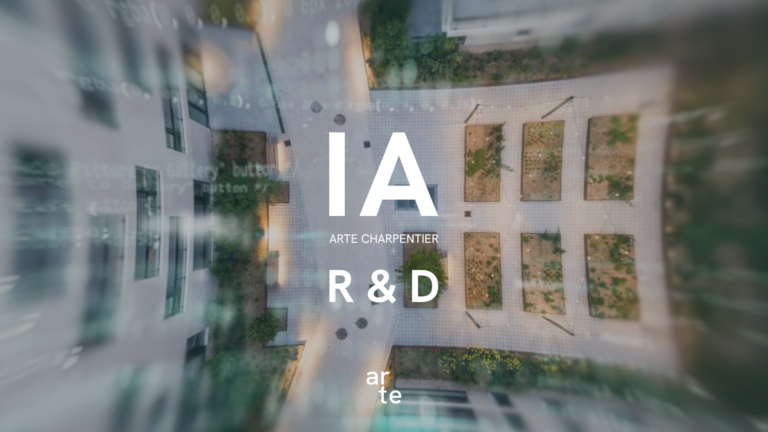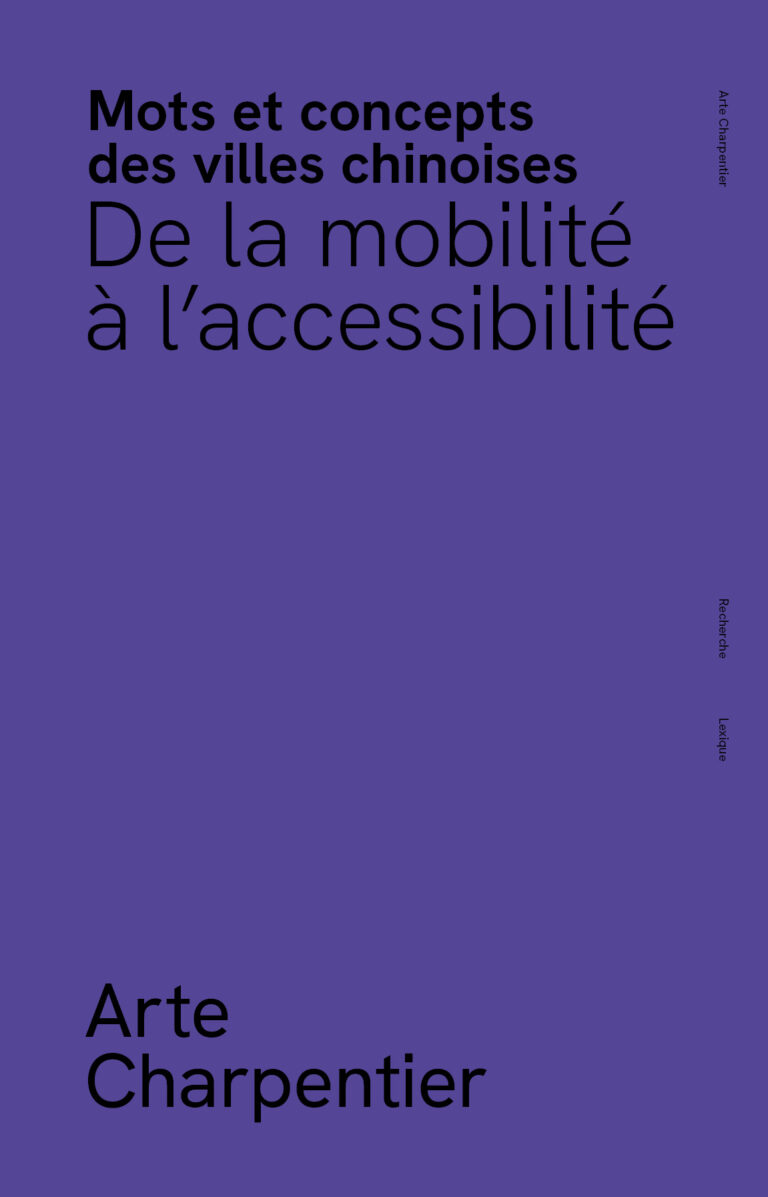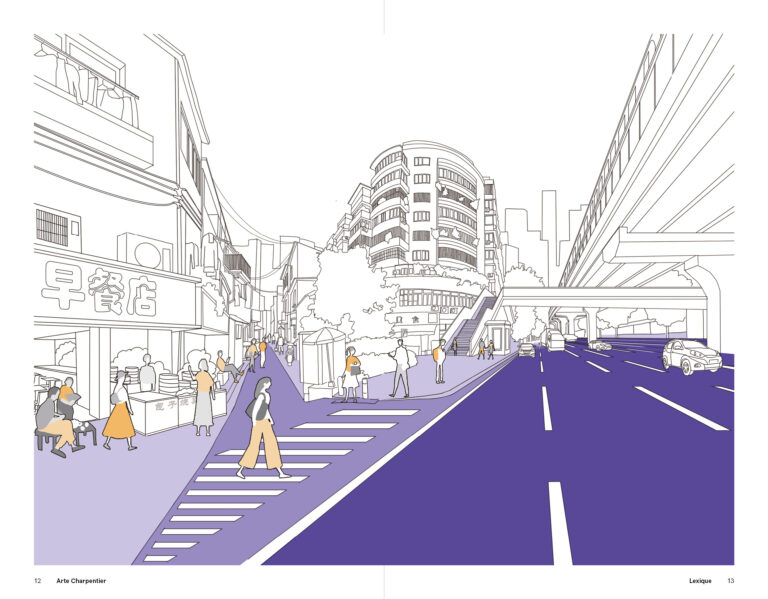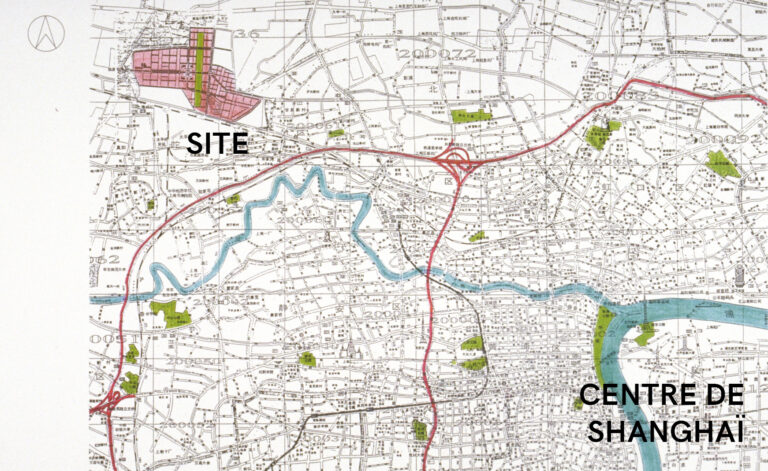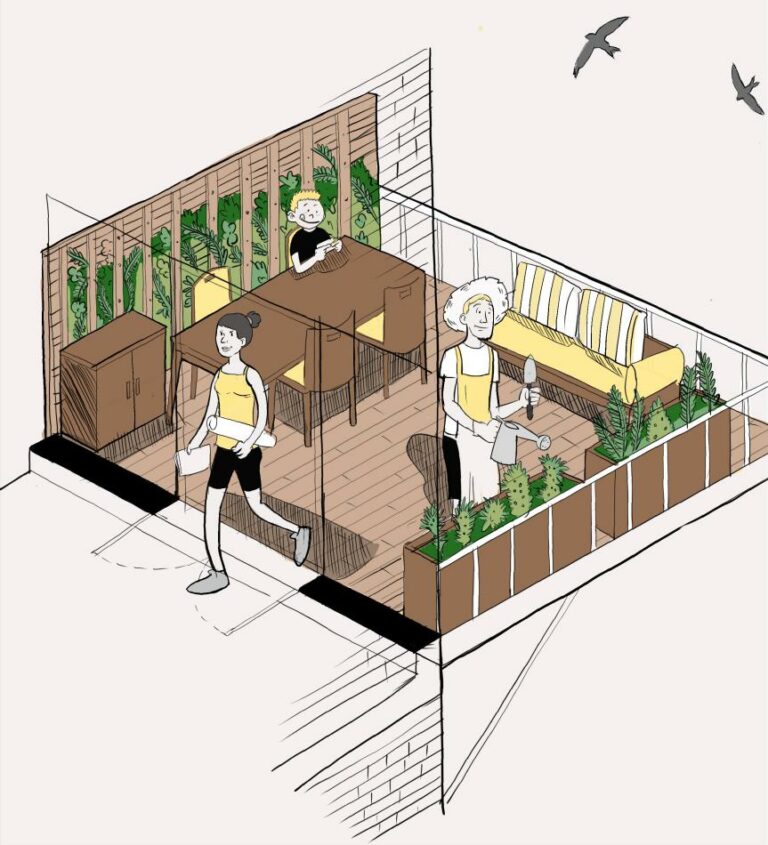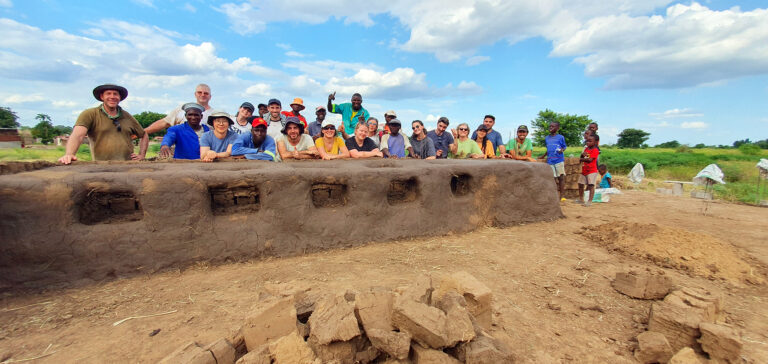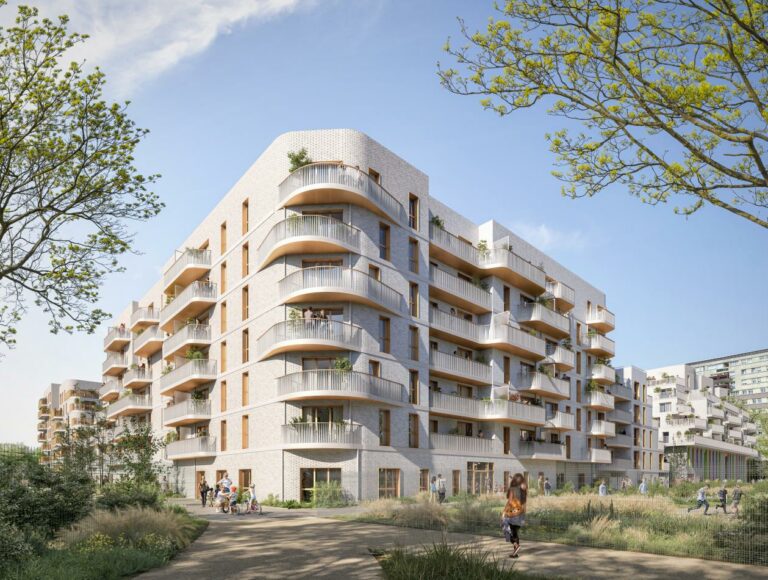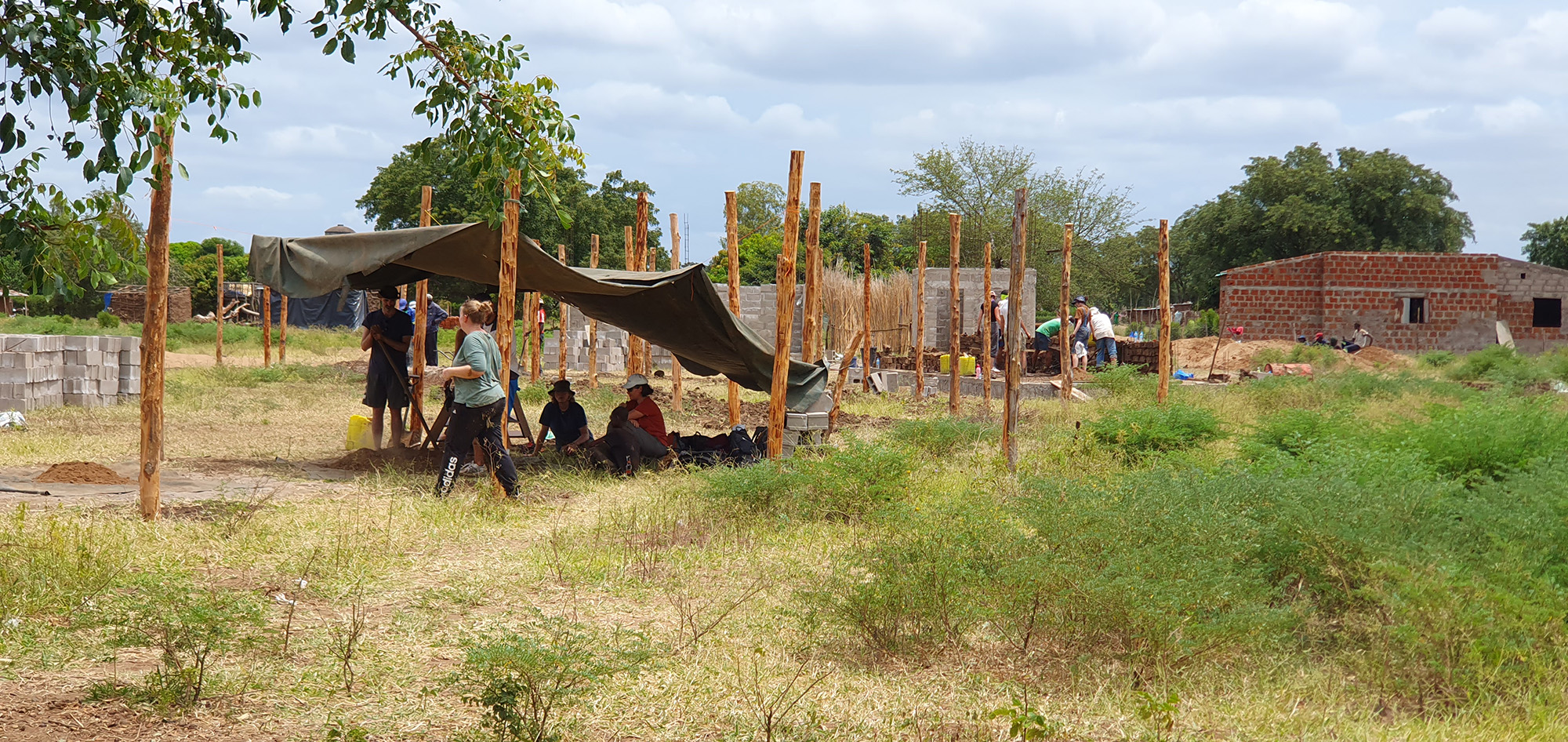
© Evangelos Batagiannis February 2023 // The start of construction, rudimentary but essential sun protection
Evangelos Batagiannis is an architect with Arte Charpentier. For many years, Evangelos has been interested in the forms of housing, collective housing and the possible uses of inhabited spaces. This architectural research and his desire to share experiences have fuelled his commitment to a humanitarian mission to build an after-school centre in Mozambique.
In 2022, he took part in his first mission to Malawi. We now give him the space to talk about his experience.
The “Fraternidade Sem Fronteiras” association has already built a number of after-school care centres in Mozambique. Each centre consists of a series of lightweight buildings arranged in a circle around a central common room. The refectory, kitchen, classrooms, storerooms, toilets, etc. are all built using the same architecture, with a wooden roof structure and a characteristic straw exterior, all on a concrete slab. The classrooms are open to the sides but sheltered from the rain.
In the village of Barragem, work on the new after-school centre is being carried out jointly by the two associations. What’s new is that we’re building the side walls of the classrooms to better protect the children from exposure to the sun, rain and wind, and these will be made of unbaked earth to save money.
En route to the construction site
The site was a 30-minute truck ride away on the only tarmac road in the region, so we had to travel with the workers every morning in a small van. Sometimes we had to take the village children to school in the same van.
Every morning we set off at 7am to get to the site. The heat was overwhelming during the day, and the humidity very high. At the end of the village of Barragem, next to the Limpopo River, the new project comprised eight buildings on a 2-hectare site. Three “Coup de Pouce Humanitaire” missions were to follow one another to build the first two buildings, the kitchen and the refectory. The center will be able to accommodate 1,000 children and serve them meals.
The opening of the construction site was preceded by a ceremony of offering the land to the association. The purpose of this rite of blessing is to ask nature for forgiveness for the use of the land during the construction of a building. It was thanks to the village elders who gave their permission that the project was launched. In the end, it’s almost like getting a building permit!
On the site, we are 14 volunteers and 15 workers. The task seems immense, given the size of the site and the rudimentary tools at our disposal (wheelbarrows, shovels, picks, machetes and spades). Many actions that would be automated on a construction site in Europe are not so here. Nothing is precise, nothing is mechanical, nothing is automatic. Moreover, the site lacks foresight, which has repercussions on safety.
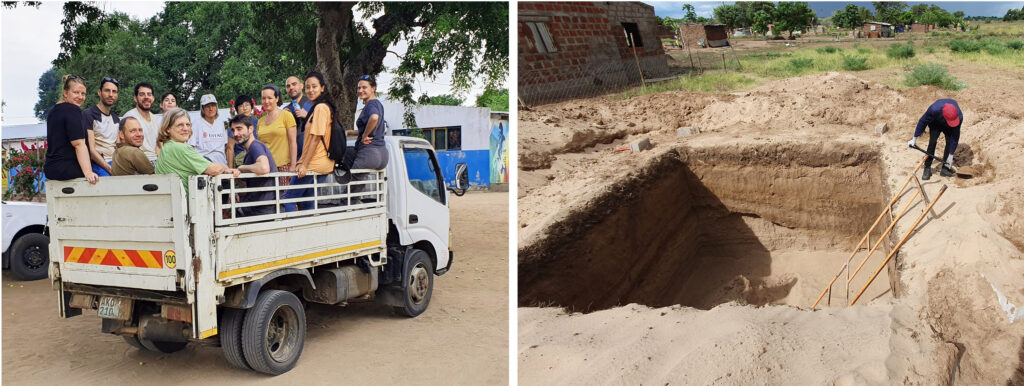
© Philippe Thouvenin and Evangelos Batagiannis February 2023 // The van leaving for the site with the crew and a gaping, unprotected hole in the site.
The various tasks
We embarked on a hybrid, eco-construction project. We poured concrete, but also worked extensively with raw earth. Here are just a few of the tasks we completed:
-
brick and plaster walls
-
raw clay kitchen oven
-
breezeblock base
-
concrete sanitary ware top slab for installation of water tank
-
breezeblock walls for the storage area
During this project, I was able to work a lot with João, a local worker who worked on several shifts. We exchanged juxtaposed words of English and Portuguese, which enabled us to understand each other (at least, most of the time).
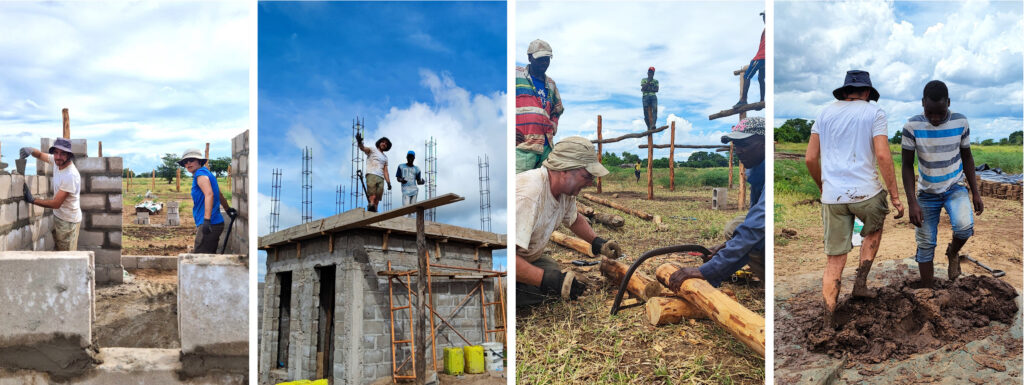
© Philippe Thouvenin, Xuemei Shao and Evangelos Batagiannis February 2023 // Different tasks on this hybrid site
The raw clay site: from mud to construction
Ingredients for a successful recipe
Specifically, to make mud bricks we need 3 ingredients in sufficient quantity.
2 wheelbarrows of earth + 2 wheelbarrows of sand + 1 barrel of water = bricks.
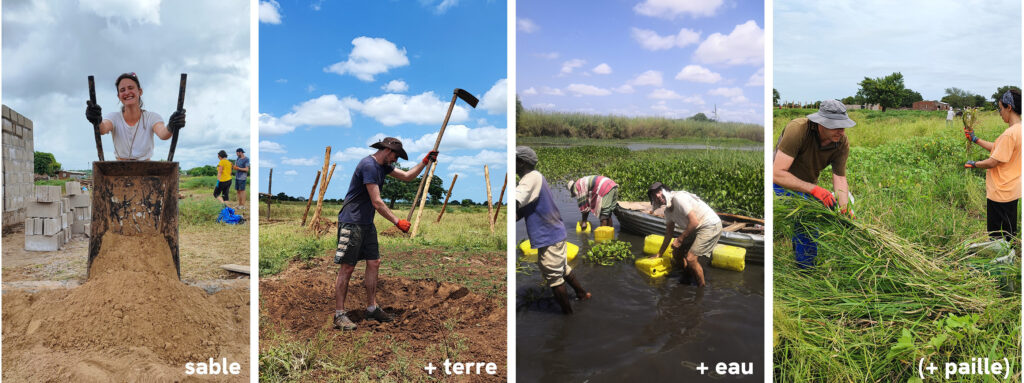
© Evangelos Batagiannis and Xuemei Shao February 2023 // “Harvesting” the raw material to make bricks
Clay + Sand
We collect the soil extracted from the foundations of the future buildings. We also collect the sand extracted during the digging of the school’s future septic tank.
Straw
Straw is an important ingredient in the manufacture of plaster. We quickly find it in the fields around the site and process it by cutting it up and leaving it to dry in the sun.
Water
Initially, the water came from the Limpopo River. The small truck left twice a day to fill the cans and barrels, bringing the site to a standstill during this time. The truck would stop in the black water of the river and the workers would fill the cans. I also went there a few times to help out. It was also an opportunity to forge links with the workers. But the workers were adamant that we shouldn’t go in the water.
Later, I understood why…when I realized how dangerous the fauna living in these waters was. João showed me a huge fish that was only a few centimetres away from me, or when I finally saw the sign warning of the presence of crocodiles in the river.
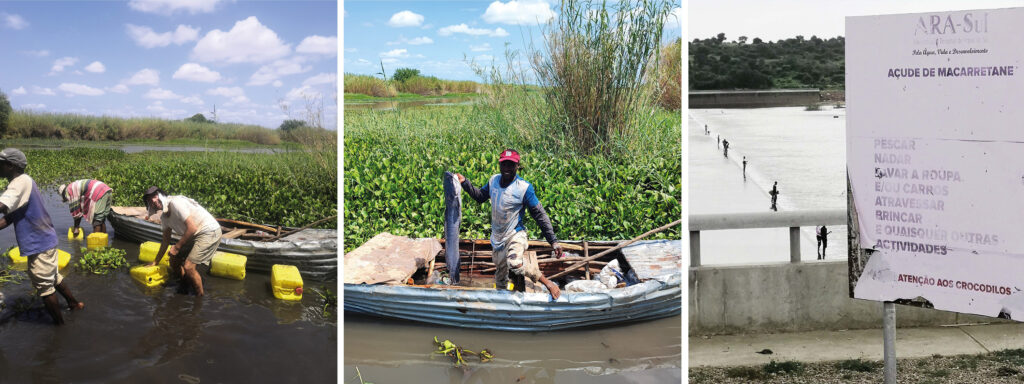
© Evangelos Batagiannis and Xuemei Shao February 2023 // The perilous extraction of water from the Limpopo River, whose name means “river of crocodiles”.
Brick and plaster making, the recipe: “don’t be afraid to get down in the mud”.
With all the ingredients in place, brickmaking can begin. The aim is to first make the mud, the dough that will then form the brick, with dimensions of 31x19x13cm..
At first, production took place in the small pits fashioned by the team that preceded us. Using rudimentary means, we transported the ingredients, then the versions in the pits, then kneaded everything with our feet, digging deeper. The movements had to be fast and energetic – the pace was like a cardio class! The big drawback was the heat in the pits, which made the work unbearable.
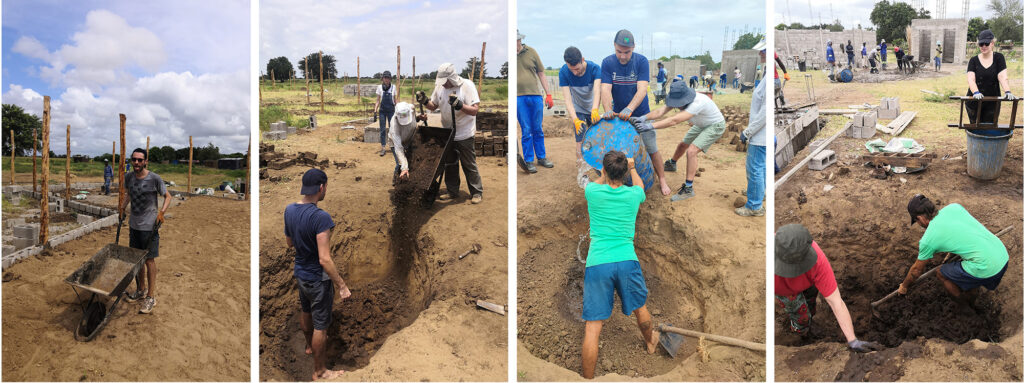
Philippe Thouvenin, Xuemei Shao and Evangelos Batagiannis February 2023 // Sludge manufacturing process
We soon decided to improve the process and working conditions, by building an above-ground solar shelter, bringing us closer to where the earth and sand were dug. This meant shorter distances and easier mixing. This change took the pressure off the team and helped them to bond around a common idea. All team members were involved in the project, from conception to completion.
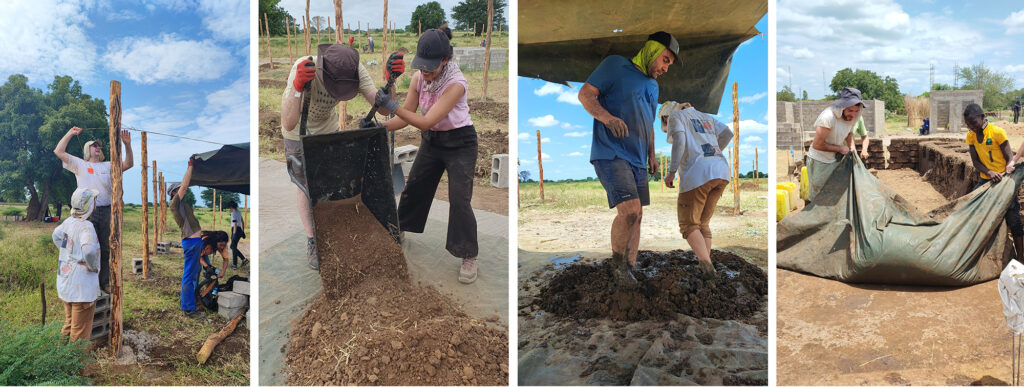
© Evangelos Batagiannis and Xuemei Shao February 2023 // Process improvement – processing of mud
Mixing stopped when we judged that the mud had a good water balance. The pasty slurry would then emerge from the earth and be forcefully thrown into the wooden brick moulds. These molds, each measuring 31x19x13cm, gave the bricks a fairly substantial weight. The bricks were compacted and then removed from the moulds with jerky movements. All we had to do was wait 2-3 days for the bricks to dry.
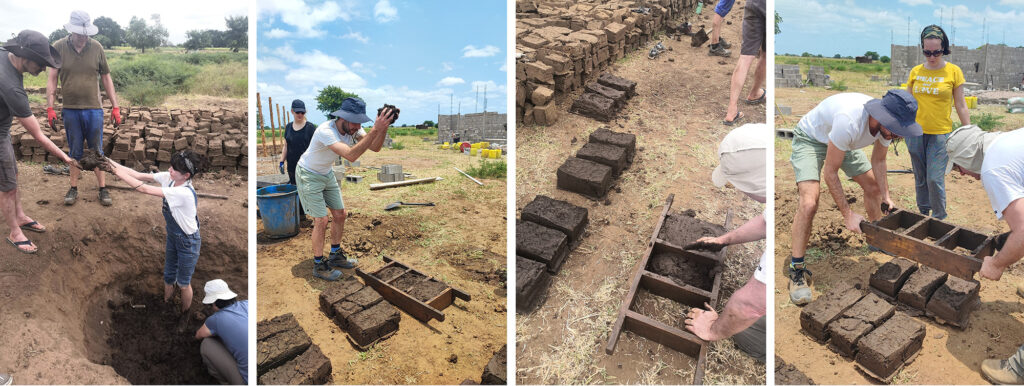
© Philippe Thouvenin and Xuemei Shao February 2023 // Brick manufacturing process
Oven construction
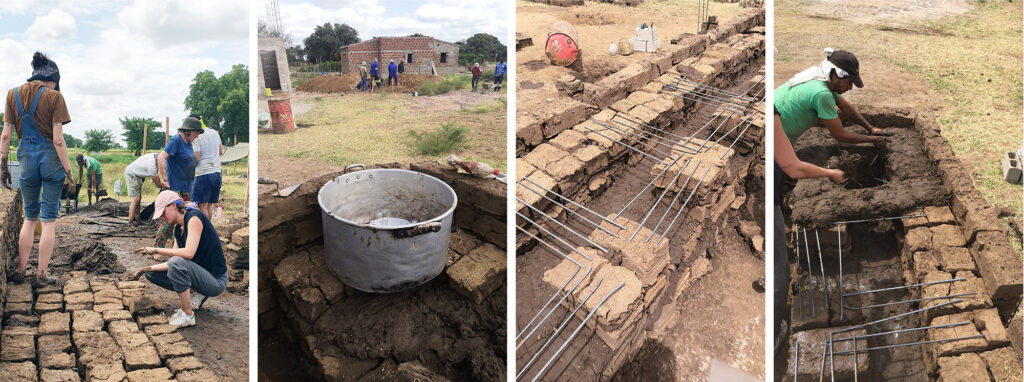
© Evangelos Batagiannis February 2023 // Stages in the construction of the school oven in Barragem
The kitchen oven was also built from mud bricks. It has 5 fireplaces and allows smoke to escape to the outside (a principle that was not easy to explain the previous year in Malawi).
It’s mainly made of bricks. We used the kettles as a yardstick to determine the dimensions of the fireplaces, then added the reinforcement and semi-liquid raw earth to bind everything together.
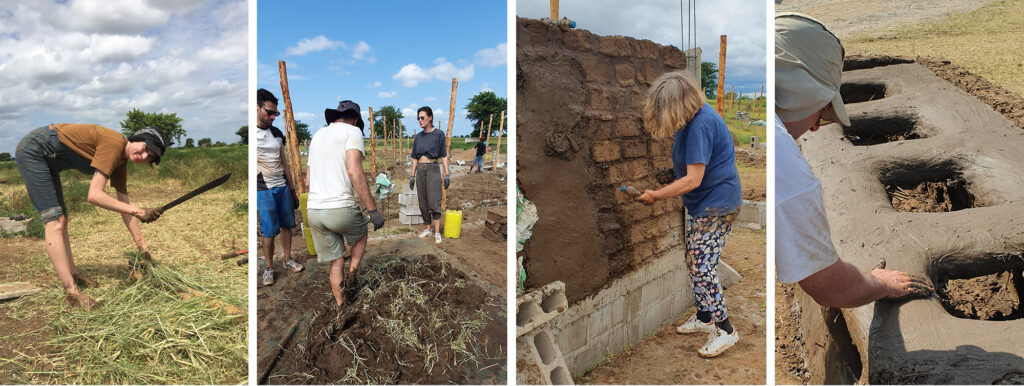
© Evangelos Batagiannis and Xuemei Shao February 2023 // The plaster-making process
As for the finishing touches, we made a plaster from earth, adding more water and straw. By the way, the straw stung quite a bit when we mixed it with the earth, barefoot…
So, spraying the more liquid paste onto the walls this time, we spread and then smoothed it all out to achieve a beautiful finish.
At the end of our project and before leaving, we wanted to test the oven’s operation and check the quality of our work. Once the plaster had dried, we started a fire to prepare a cup of tea. We were pleased and proud to see that the kitchen was functional, and that the smoke was coming out of the chimney correctly.
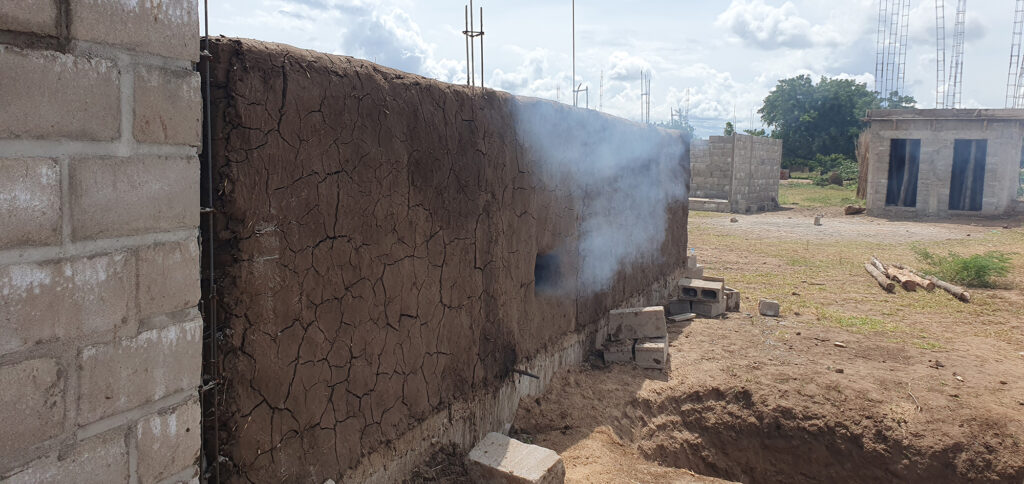
© Evangelos Batagiannis February 2023 // The furnace in full operation on the last day of construction at Barragem
-
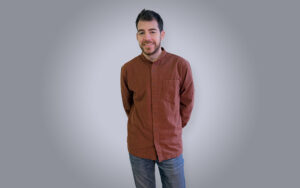
Evangelos Batagiannis Architect
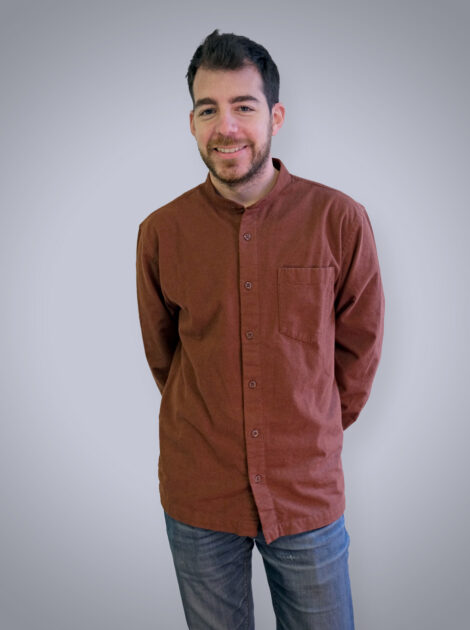
EDUCATION
Architect H.M.O.N.P. – Ecole Nationale Supérieure d’Architecture de Paris la Villette (2016)Architect D.E. – Ecole Nationale Supérieure d’Architecture, Paris Val de Seine (2015)Bachelor’s degree in Architecture – Ecole Nationale Supérieure d’Architecture de Paris val de seine (2012)SEMINAR
“Ancient, modern and contemporary heritage” – François Gruson
